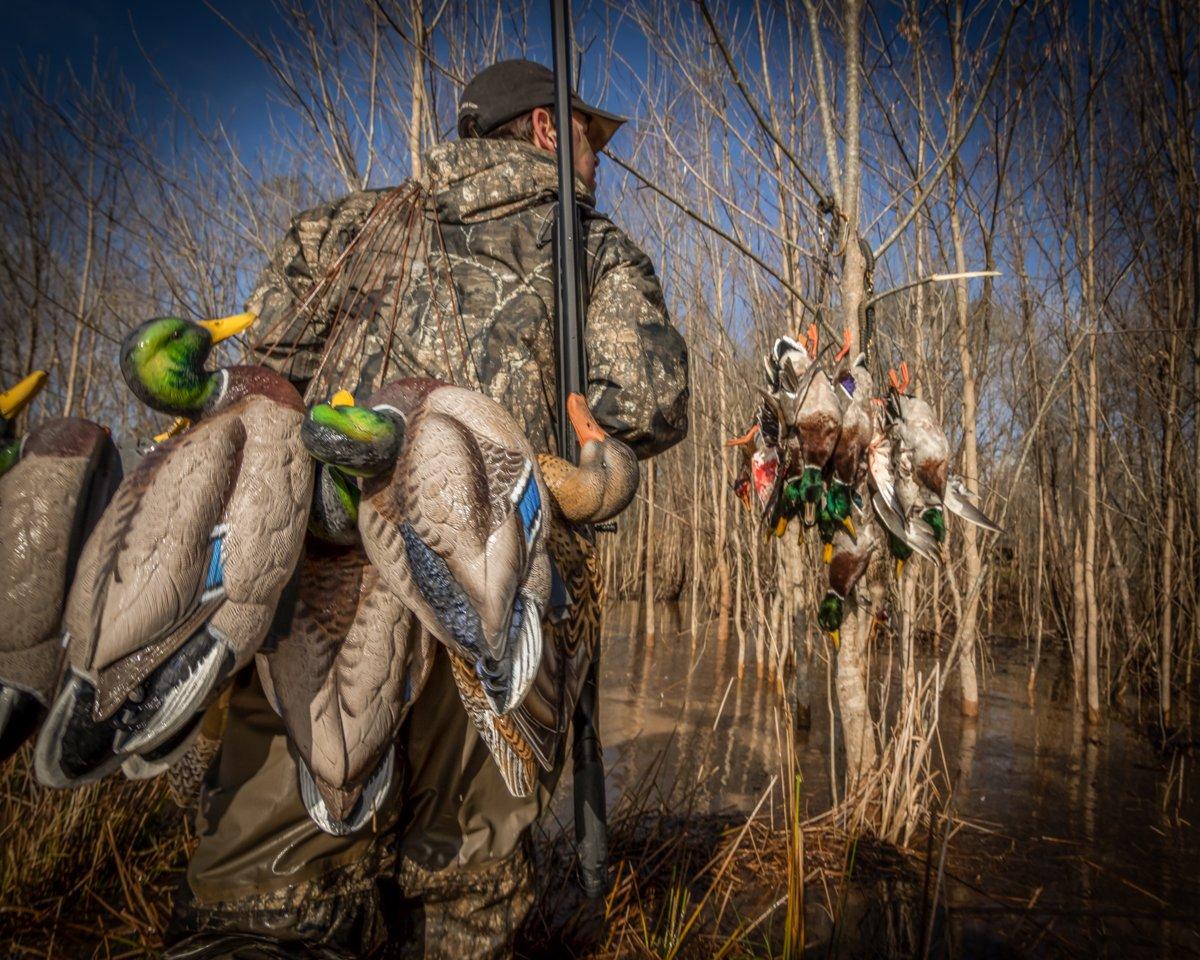My favorite setups have put ducks and geese on the strap for decades, and they still work
Waterfowlers tend to fall into habits. But often, that's because those habits pay dividends. I'm no different, especially when it comes to my decoy setups. In fact, during the past several years, I've noticed that I tend to set my decoys in one of five tried-and-true ways, time and again. Those setups put ducks and geese into easy shotgun range just as effectively as they did 30 years ago.
So here, in no order, are my five all-time favorite spreads.
The Pothole Crab
Pond or pothole spreads for puddlers don't require too much fuss. Usually, a natural, relaxed stool suffices. This setup merely refines and narrows your kill hole. Place several decoys — the number will depend on the situation, but usually one or two-dozen are enough — in a loose stool to one side of your boat or blind. Then, extend an arm of three to six decoys downwind off each side of the stool and relatively close to shoreline cover, forming a loose crab shape. Those crab arms discourage ducks from landing short, and funnel birds toward the hole.
The Fat L
You'll want five or six long lines of diver decoys for this spread, which is ideal for shoreline or island hunters. Place four or five lines upwind to one side of your hide, and then run the other one or two as a long tail, starting from the closest inside decoy and extending downwind. Leave some slack in the tail lines so they bow in the waves. The tail, of course, serves as your runway, as divers love to fly over their own kind on approach. Decoys in the main body are blockers. The wide space formed between the tail and blockers is your kill hole.
Three-Blob Field Set
Field-hunting for geese can be a numbers game, but in many situations — especially during early seasons for locally raised honkers — farmers don't want you driving on fields, and that severely limits the number of full-bodies you can set up. No worries. If you and a partner can lug three- to four-dozen decoys to the X, you're in business. Divide them somewhat equally into three family groups, making sure each group has several feeders, some loafers and a looker or two. Place one group amongst and just behind your blinds, using a few full-bodies to help with concealment. Set the other two groups left and right of your blinds, perhaps 20 to 30 yards downwind. This creates a natural looking micro-spread with a well-defined hole.
Prairie Smorgasbord
As with early-season goose setups, walk-in prairie hunts limit how many fakes you can tote. I solve the dilemma by mixing and matching several types of puddle-duck decoys, including mallards, gadwall, teal and at least one pintail. Gadwall are seemingly ubiquitous on the prairies, so any setup with them appears natural. Mallards add confidence, as any duck recognizes greenheads and will decoy to them. Small teal decoys boost your numbers and let you fill in holes. And a white drake pintail decoy really adds visibility. Depending on the size of the pothole, I'll configure the blocks in a broad, loose stool or form a long J-hook.
You can also boost this spread with a few more blocks. When hunting loafing sloughs, where mallards or geese lounge along mud flats or sandy shorelines, have a partner carry in some full-body duck or goose fakes to set on land. Or, if you're hunting larger water for divers, grab six canvasback decoys, and set those out like a long tail downwind of your puddler spread.
Open-Water Five-Line Layout-Boat Set
This remains one of the simplest yet deadliest spreads I've used. First, position and anchor the layout boat so it's facing downwind. Then, run one or two long lines (about 14 blocks each) to the right of the boat, with two or three decoys from each string upwind of the boat for cover. Place the other three or four lines to the left of the boat, staggering them so the farthest string stretches a few decoys farther than the inside line. All decoys — left, right and downwind — should be within effective shooting range. Leave an ample open hole between the left and right lines, and then add a couple of singles or V-boards to mimic ducks that have just landed in the opening. V-boards also help hide the layout boat. Divers approaching from downwind instinctively work toward and over the strings and often want to decoy in the kill hole. Some guys eschew this setup, saying more elaborate spreads work better. My response? This configuration continues to perform, especially if you're on the X or a hot flight line. Further, it's easy to set up and take in.
Your Favorites
You've probably used some variants of these spreads. Or maybe you've designed unique configurations. Bottom line? Go with whatever works. Then we can meet at the boat landing, admire each other's ducks and have a friendly debate about how to best place decoys.
Click here for more Realtree waterfowl hunting content. And check us out on Facebook.







